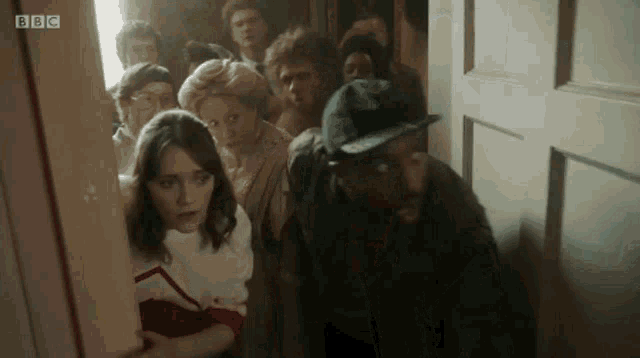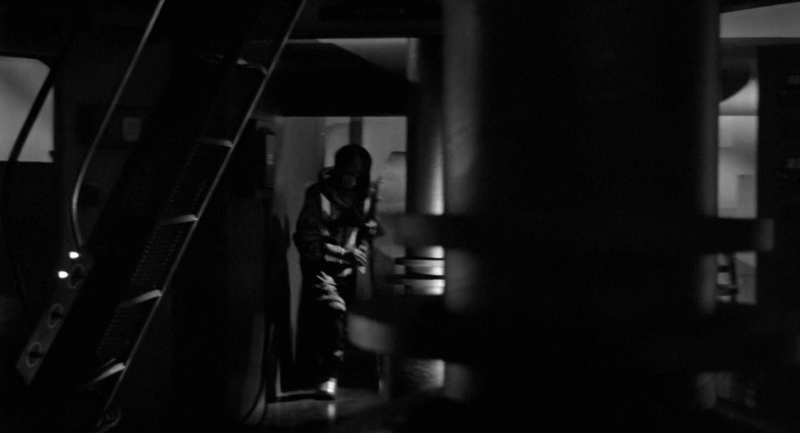In the current blog series, I've been working my way through Greta Garbo's films. We are up to 1937 and "Conquest," in which Garbo plays Polish countess Marie Walewska who is persuaded by the government of her country to use her beauty and charm to distract Napoleon Bonaparte from invading her beloved homeland. In a previous post, I wrote a bit about this biopic and the real Marie Walewska.
Which leaves us to devote our post to the pairing of Garbo with actor Charles Boyer (don't confuse him with Maurice Chevalier!), and compare the French actor to other leading men with whom Garbo starred.
These days, people are most likely to recognize Charles Boyer from the films "Casino Royale" and "Around the World in 80 Days," or guest star appearances on celebrity-studded television shows like "The Name of the Game." Boyer was a capable actor and he ought to be remembered for his best work, including the films "Gaslight" and "Algiers."
I'm not sure he should be remembered for "Conquest," which is one of those period dramas which doesn't have quite enough of any one thing to keep it going.I keep telling myself that it's not Boyer's fault that they combed his hair forward into a pointed forelock which suggest less Napoleon and more "My Little Pony." The dynamic in "Conquest" is supposed to be this: Napoleon is troubled and slightly mad, and Garbo's character Marie is helping him calm down and you know, make better choices. But I'm sorry to say that in much of the film Boyer looks as though he has indigestion and Garbo looks solicitous, as though she is offering him something to settle his stomach. Also, if you look at the two of them, Boyer appears to have no neck at all while Garbo has enough neck for the two of them.
How does Charles Boyer measure up to other leading men who co-starred with Greta Garbo? Maybe we should start with how this movie convention -- big-name male star A on the movie poster with big-name female star B -- developed. As Hollywood evolved during the 1930s, the movies depended more and more on these romantic pairings. The best-known Leading Lady / Leading Man couples are Katharine Hepburn & Spencer Tracy, Myrna Loy & William Powell, and Humphrey Bogart & Lauren Bacall.
This kind of match-up was central to films directed by 1920s sensation Clarence Brown, who often got his name on movie posters in as large a font (if not larger) than the names of the stars. Brown had directed at Universal Studios before coming to MGM, where he directed Greta Garbo in seven films, most notably "Anna Karenina." Brown directed Joan Crawford in nearly as many films as he had Garbo -- six with Crawford) and like another MGM director, George Cukor, Brown was seen as a women's director, which often meant films with love stories at the center.
Of course it was the heads of the studios who felt that they knew what audiences wanted, and these men decided that the combination of leading man plus leading lady was the key to selling movie tickets. Since I'm always interested in the business of the movies as well as the artistic part, I'd like to look at four of Garbo's leading men and what I think MGM was trying to do.
Recently I did a whole post on Garbo with John Gilbert, so for today I will choose (besides Charles Boyer) the big-name leading men Robert Taylor, Lewis Stone, and Clark Gable.
Robert Taylor, in "Camille" and on the movie poster, sometimes eems to be looming over Greta Garbo, but in reality Taylor was six feet tall and Garbo was five feet seven inches. So he was five inches taller.
All through "Camille" these two people have physical intensity which is -- well, beyond the pale. (S0rry.) We get this Mutt and Jeff height-difference thing, and the vampire-and-victim thing, till near the end of the film, when Camille has to lie on a velvet couch because of her weakening health. Armand devotedly sits beside her. She's actively dying so maybe now the two can be on the same level without all the power dynamics. Though Garbo's smile seems strangely happy considering the situation.
In the 1930s, people who knew the cast of "Camille," and reporters who asked each of the leading stars later in life about the other, all seemed to give the same impression: Taylor had started out as intimidated by his leading lady, but had to come to find her friendly and kind. He said several admiring things about her acting abilities. Garbo described Taylor as well-mannered and kind; she had felt physically ill during the production of "Camille," and Taylor had brought in what Garbo called a 'gramophone" to cheer her, as he knew she liked music.
Despite Robert Taylor's politics, I greatly prefer him as Garbo's co-star over Lewis Stone. Stone, best-known for playing Judge Hardy in the Mickey Rooney / Judy Garland movie series, actually made dozens of films, including three with Greta Garbo: "A Woman of Affairs," "Romance," and "Wild Orchids." In one film he played a kindly doctor trying to help sort out some tangled relationships, in another he played an old creepy guy whose soiled the reputation of Garbo's character so that it's hard for her to develop a healthy relationship with a man who own age, and once he's an aging adventurer who brings his young pretty wife along and then is surprised that she doesn't stay bome wiating for him while he goes off to do interesting things.
Creepy? You betcha. Note Garbo's schoolgirl hairdos in both these film stills. In the era before feminism shook the world, a "fatherly" husband was a staple of the movies. Wives were childish creatures who needed an experienced man to keep order in the household and teach his wife about life.
Last on my list for today of Garbo's leading men is Clark Gable. It's been said that Gable and Garbo didn't like each other in real life. She apparently thought he couldn't act, and he thought she looked down on him. I don't know how it was, but onscreen I don't think the chemistry is bad. It seems less like passion and more like two souls trying to figure out if they are better off together or apart. We get both grizzled working-man Gable, and swmooth-shaven, dimple-cheeked sweet Gable in his only picture with Garbo, "Susan Lenox: Her Fall and Rise."













































